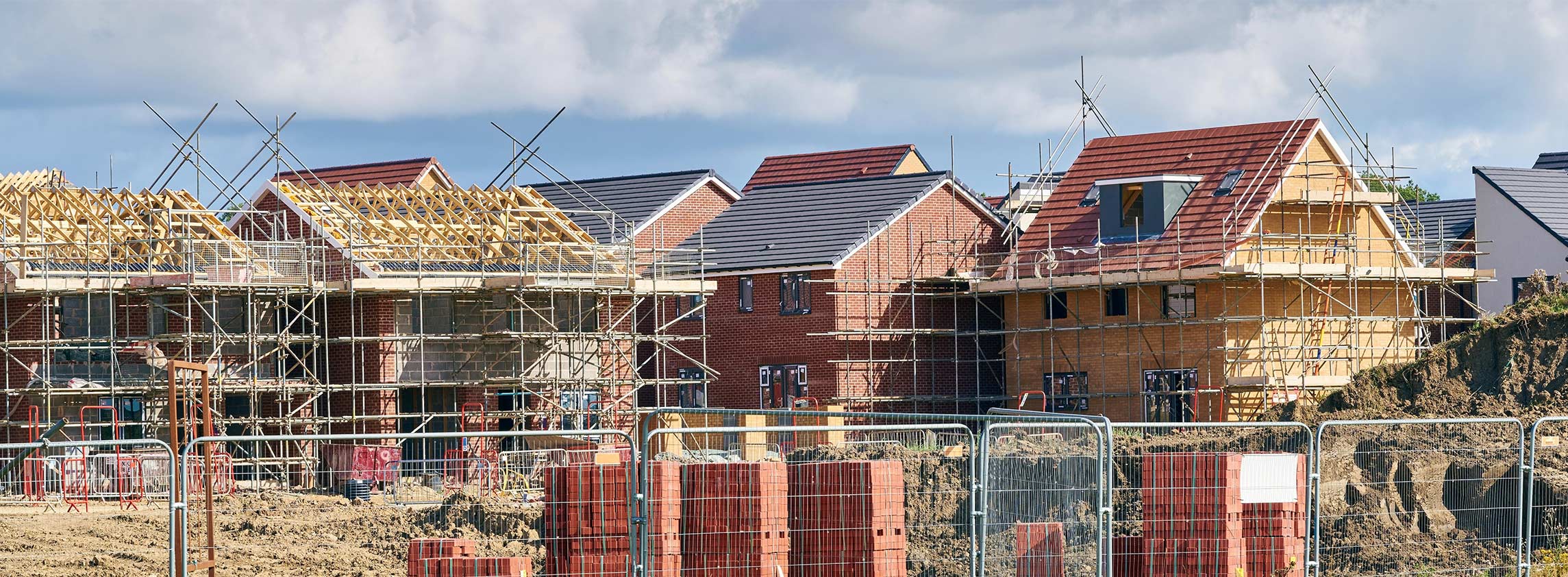Land values increase across all regions
An exceptionally strong housing market in addition to robust demand for land and a lack of immediate sites have underpinned high land value growth over the last quarter. UK greenfield and UK urban values increased by 1.7% and 1.8% in Q2 2021 respectively, marking the strongest growth in greenfield land values since 2014.
Competition for sites
Demand for land has increased over the last quarter as all players continue to seek land opportunities. Against a backdrop of limited stock, there is pent up demand and increased competition for sites. A net balance of 82% of Savills development agents reported increasing bid levels in Q2 2021 compared to normal levels.
Although appetite remains for bulk sales for Build to Rent and affordable housing, developers have favoured open market sales opportunities supported by the resilient housing market. Deferred payments are still being offered, however as land sales have become increasingly competitive, some vendors have been able to negotiate more favourable, upfront payment terms.
High new home sales rates averaging 0.84 sales per outlet per week in April 2021, robust order books and completions, have brought forward land purchasing requirements for many housebuilders.
Major housebuilders have deployed capital into new land opportunities, with some investing at rates ahead of previous years in order to match ongoing demand for new homes and to meet medium-term growth targets.
Shortage of supply
There is still a shortage of supply of development land across the country driving competition and upward pressure on values. More new sites have been brought to the market over the last quarter, according to a net balance of 79% of Savills development agents in Q2 2021. However, there is still a scarcity of immediate stock relative to the level of demand for sites.
Oven-ready sites of 50–150 units continue to be in the highest demand across a range of players
Lucy Greenwood, Director, Residential Research
In Q1 2021, the rolling annual total of planning consents in the UK fell by 14% compared to the equivalent period in 2020. Additionally, this pipeline of new homes is not distributed across the country in line with the areas where new homes are most needed and demand is strongest.
Oven-ready sites of 50–150 units continue to be in the highest demand across a range of players. There is a preference in many regions for smaller housing-led sites in greenfield locations and edge-of-settlement sites in rural towns and villages.
A strong housing market
Housing market activity has continued to bolster confidence in the land market across all regions. National house prices grew by 13.4% in the year to June 2021, representing the strongest growth since November 2004, according to Nationwide. Completed transactions in April 2021 were 59% higher than the 2018-20 average, according to HMRC, dominated by home movers and buyers seeking extra space.
Buyer priorities have transformed as a result of Covid-19 with many upsizing to larger homes with gardens. 54% of respondents considered extra living space as a top priority, followed by 40% prioritising a larger garden and 41% a separate work from home space, according to a survey of Savills prospective buyers and sellers in June 2021. House-led greenfield development lends itself to meeting this demand.
House price growth tempers build cost inflation
The impact of Covid-19, Brexit and a global surge in construction demand have all driven build cost inflation. However, rising build cost pressures have so far largely been offset by strong house price growth over the last year.
Material prices rose by 5.6% in the year to Q1 2021 and are forecast to increase by 7.2% in the year to Q2 2021
Lydia McLaren, Associate, Residential Research
The availability of materials was cited as a major development constraint by 59% of respondents in the Q1 2021 HBF survey, up from 26% the previous quarter. Global demand for raw materials has outstripped supply resulting in disrupted supply chains and inflated prices.
Material prices rose by 5.6% in the year to Q1 2021 and are forecast to increase by 7.2% in the year to Q2 2021, according to BCIS Materials Cost Index, with materials such as timber, steel and concrete seeing the greatest price increases.
Cost pressures will have the biggest impact on smaller- and medium-sized players with less ability to forward plan supply chains. Housing associations have faced unprecedented development delays of up to ten weeks on completion as a result of material shortages, according to Inside Housing in June 2021.
Despite the current strength of the residential market, cost inflation will continue to impact the sector, especially as increasing costs to meet building regulations under the Future Homes Standard come into effect from 2022 and pressures on better design are introduced under the National Model Design Code.
Private mortgage guarantee schemes
In June, Newcastle Building Society became the first lender to offer 95% LTV mortgages for new build homes under the insurance backed Deposit Unlock scheme.
As an alternative to Help to Buy and the Government mortgage guarantee scheme, housebuilders participating in Deposit Unlock will pay the cost of insuring mortgages through a percentage of income from house sales.
Market Mortgage is another scheme set to support high LTV loans from mainstream lenders over the summer. The initiative involves a loan of 85% of the property’s value provided by the lender whilst the investment bank tops up the loan by 10%. Developers are supporting the extension of the product to 95% LTV on new homes. Both initiatives have the potential to support new home sales after Help to Buy.
